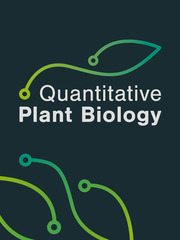Background
As climate change becomes an ever more pressing issue, there is an urgent need to improve the sustainability of the food supply. This relates to food production, distribution and waste. Here we concentrate on food production. According to FAO, 75% of cultivated biodiversity has been lost in the past century. Furthermore, climate change will impact the ambient temperature, the water supply, the frequency of extreme weather events, and the distribution of pests-- all areas that impact agricultural yields. For this reason, computational approaches to crop biology have the potential to be incredibly impactful, by accelerating research to improve our biological understanding of crop species, including in more complex settings (e.g. agroecology) and improve food production.
Session topics
This session will cover the development and application of computational methods that are specific to agricultural and crop biology research. Specifically, we will focus on the following broad research questions:
- How does the genetic make-up of a crop variety influence its gene expression, hormonal response and phenotype (morphology, environmental response, yield)?
- What are the gene networks (and hormone and metabolic pathways) controlling agriculturally-relevant phenotypes? How do these integrate environmental signals at different temporal scales (daily, seasonally)?
- How do we design the best strategy to improve the sustainability of our food supply (in terms of breeding, genetic engineering, planting, and harvesting strategies)?
- How do we transfer our biological knowledge between plant species, so that we can create more stable yields in a variety of crop species across the globe, while experiencing large environmental fluctuations caused by the climate crisis?
Key Dates
August 2, 2021: Deadline for paper submission
September 13, 2021: Final paper decisions announced by organisers
October 1, 2021: Camera-ready papers due
December 6, 2021: Poster abstract deadline
January 3-7, 2022: Pacific Symposium for Biocomputing Conference in Hawaii (if in person)
Session Organisers
Daphne Ezer is a Lecturer in Computational Biology at the University of York, United Kingdom.
Rosangela "Ross" Sozzani is an Associate Professor and University Faculty Scholar at North Carolina State University.
Olivier Hamant is studying the role of mechanical signals in plants at the plant reproduction and development lab at Ecole Normale Supérieure de Lyon, using cell biology, biophysics and modeling approaches. He is also affiliated to the Sainsbury lab in Cambridge (UK) and Kumamoto Univ. (Japan).
Lucia Strader is an Associate Professor at Duke University and is also a member of the Center for Science and Engineering of Living Systems at Washington University and of the Center for Engineering Mechanobiology at Washington University.
Submission Information
Papers must be submitted to the PSB paper management system. Please note that the submitted papers are reviewed and accepted on a competitive basis. At least three reviewers will be assigned to each submitted manuscript.
The accepted file formats are: postscript (*.ps) and Adobe Acrobat (*.pdf). Attached files should be named with the last name of the first author (e.g., altman.ps or altman.pdf). Hardcopy submissions, unprocessed TeX or LaTeX files, or electronic submissions not submitted through the paper management system will be rejected without review. Each paper must be accompanied by a cover letter. The cover letter should be the first page of your paper submission. The cover letter must state the following: The email address of the corresponding author The specific PSB session that should review the paper or abstract The submitted paper contains original, unpublished results, and is not currently under consideration elsewhere All co-authors concur with the contents of the paper Submitted papers are limited to twelve (12) pages (not including the cover letter) in our publication format. Please format your paper according to these instructions. If figures cannot be easily resized and placed precisely in the text, then it should be clear that with appropriate modifications, the total manuscript length would be within the page limit.
We also encourage articles to be submitted concurrently to the journal Quantitative Plant Biology (https://mc.manuscriptcentral.c...) to be part of a special collection on computational approaches to crop biology. Top articles accepted for the Pacific Symposium of Biocomputing will have their fees waived for inclusion in this special collection.
Quantitative Plant Biology
-

- Journal
Quantitative Plant Biology



